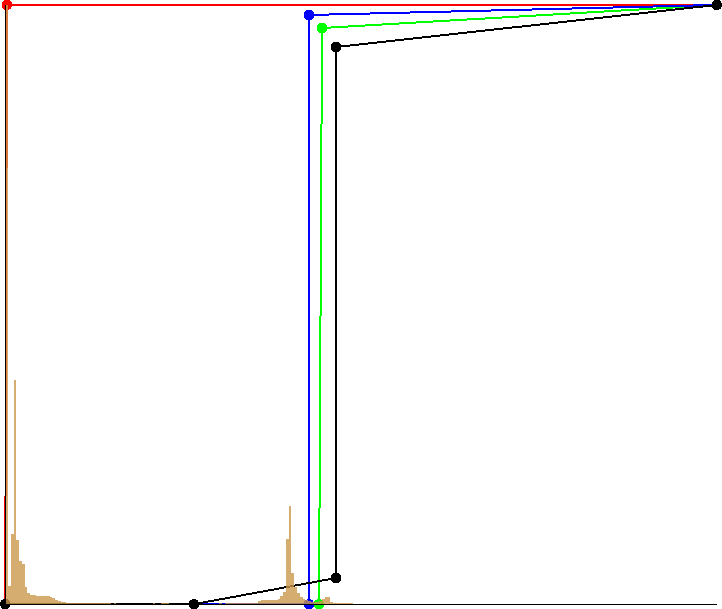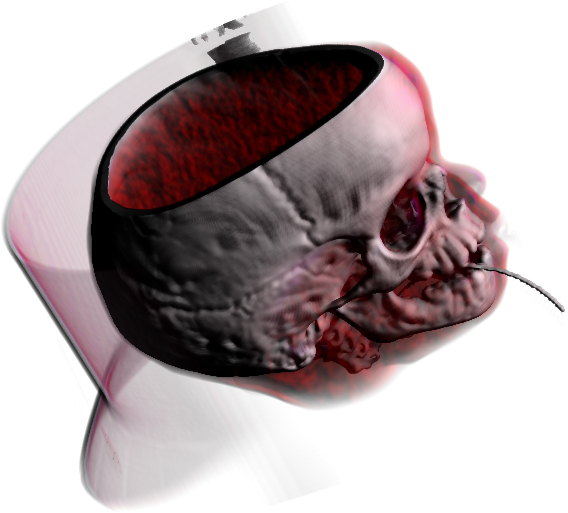In the Phong lighting calculation for $C_i$, the diffuse colour, $k_d$, can be set to a constant, or can be set based on the $\tau_i$ value.
A transfer function is a mapping from $\tau$ values to $k_d$ and $\tau'$ values.
The transfer function is usually supplied to the fragment shader as a 1D texture, $f$, which returns a four-tuple: $$(r,g,b,\tau') = f( \tau )$$
The $(r,g,b)$ values can be set to provide different colours to areas of different radiological densities, such as white for bone and red for soft tissue.
The $\tau'$ value can be used the replace the original $\tau$ in the computation of $\alpha$: $$\alpha = \tau'\ \Delta s$$
This is usually done to make some areas of the volume transparent (by setting $\tau'$ to zero) and other areas of the volume opaque (by setting $\tau'$ to one).
The examples below show three transfer functions (on the left) and their corresponding volume renderings (on the right).
The horizontal axis of the transfer function on the left is the original $\tau$ from the volume. The vertical axis is $(r,g,b,\tau')$, where the red, green, blue, and black curves show the three colours and the new $\tau'$. (The first and second examples have red, green, and blue superimposed, so only blue is visible.) The brown peaks are the histogram of $\tau$ values.
The first transfer function sets $k_d$ to $(1,1,1)$, or white, and sets $\tau' = \tau$, or unchanged. Note that surfaces appear grey in the rendering below because the white backlight and surface colour are being absorbed on the way to the eye.
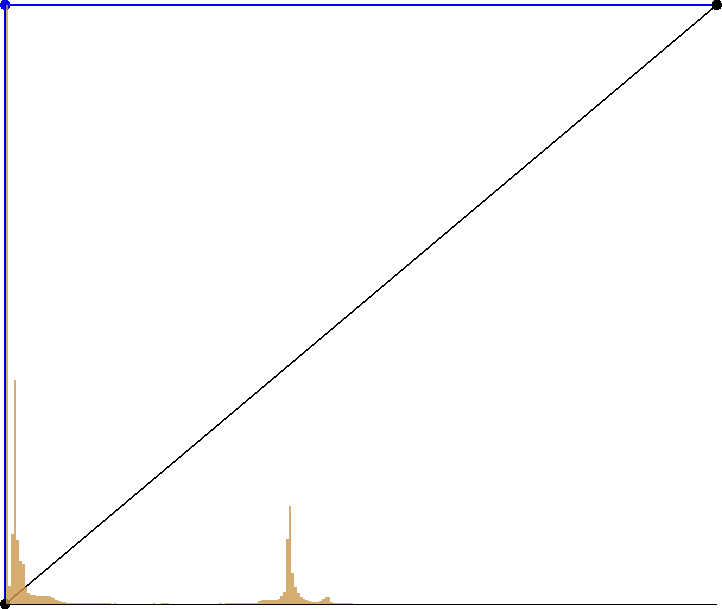
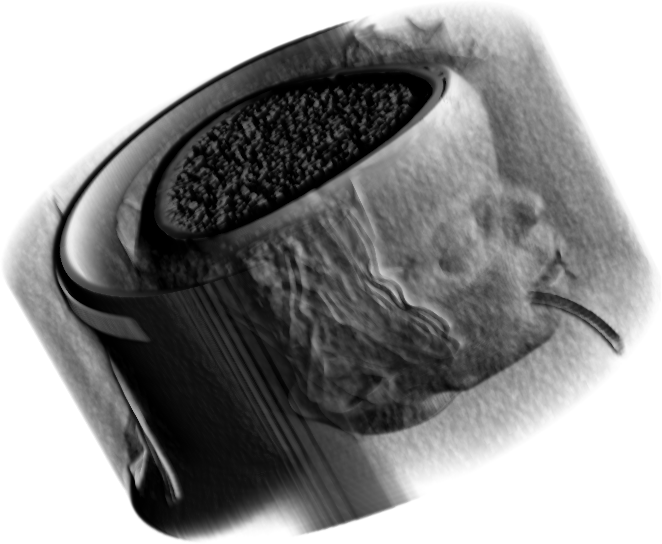
The second transfer function sets $\tau'$ to zero for low $\tau$ values. This has the effect of removing (by making transparent) the air and cloth surrounding the subject.
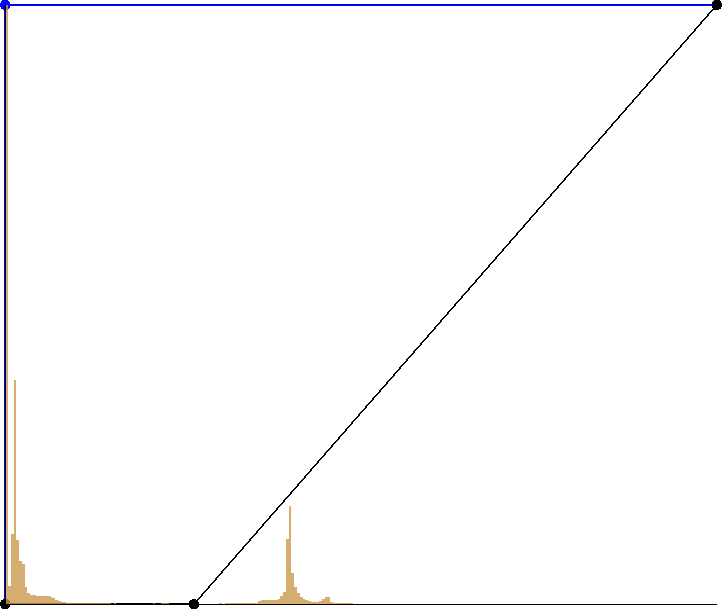
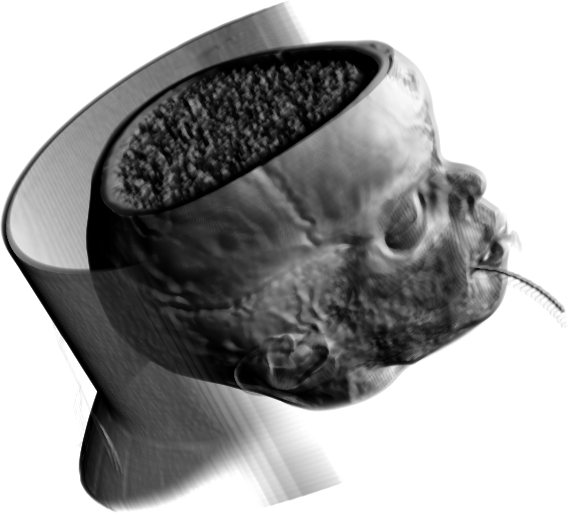
The third transfer function sets $\tau'$ (the black line below) to zero, then sets it to a slowly increasing low value, then sets it to a very high value. This has the effect of making soft tissue transparent, but still visible, and of making bone opaque.
To the left of the blue, green, and black vertical lines below, $k_d$ is set to red, because the red curve is one and the green and blue curves are zero in that range of $\tau$ values. So soft tissue appears red.
To the right of those vertical lines, $k_d$ is set to white, so bone appears white.
You can see the red soft tissue overlaying the bone underneath.
